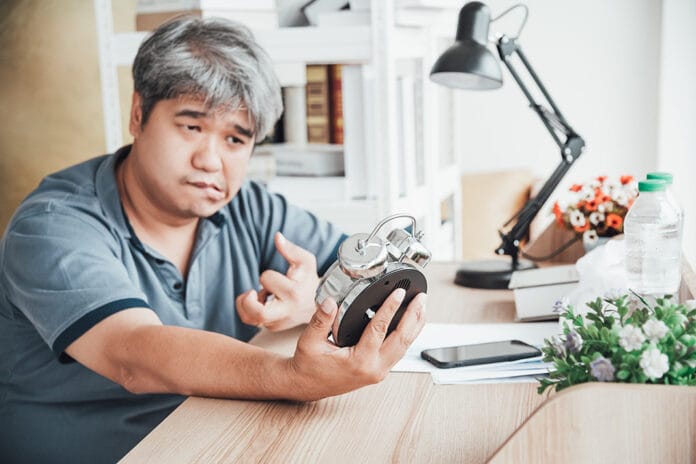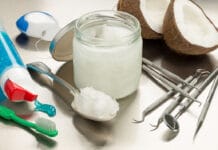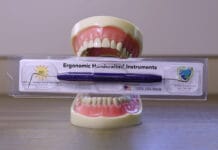Dystonia is a rare condition that affects about 1% of the population during their daily lives. The condition causes involuntary, repetitive, and violent muscle contractions as well as movements derived from a neurological disorder. Dystonia may cause squeezing or twisting with other movements or abnormal postures. It can happen throughout the whole body and is characterized as generalized (affecting multiple muscles) or isolated (pertaining to one muscle).1
Types of Other Dystonia1
- Cranial dystonia affects the head, neck, and facial muscles.
- Lingual dystonia affects the tongue causing repetitive or episodic protrusion or curling and induced when speaking or eating.
- Embouchure dystonia affects the facial muscles and lips of musicians who play wind instruments.
- Cervical dystonia affects neck muscles and causes the head to jerk, turn to one side or pull forward or backward.
- Tardive dystonia is from a drug reaction primarily from dopamine receptor blockers and affects different body parts. It usually manifests in the facial region prior to the rest of the body.
- Orolingual dystonia is repeated and uncontrollable licking of the lips or chewing-like movements.
- Spasmodic dystonia affects the vocal cords and may cause strained or breathy speech.
- Blepharospasm causes involuntary blinking of the eyes and, when combined with oromandibular dystonia, is called Miege’s syndrome.
Besides isolated dystonia, dental professionals may encounter generalized dystonia that affects the whole body:
- Torsion dystonia affects the entire body and is the rarest and most debilitating form.
- Psychogenic dystonia is caused by an abnormal psychiatric state rather than the nervous system.
Dystonic spasms present as facial grimacing, lip pursing, nasal contractions, mouth corner retractions, and platysma spasms. The spasms may cause involuntary jaw opening, lateral movements of the jaw, or protrusion of the tongue. Muscle and facial pain with headaches, tooth loss, and hyposalivation are a result of dystonic contractions.
Although several types of dystonia affect the many parts of the body, oromandibular dystonia is mainly concentrated within the oral aspect. Some symptoms of oromandibular dystonia are obvious to dental professionals.
Oromandibular Dystonia
Oromandibular dystonia is a prominent and rare condition affecting the oral cavity with forceful contractions of the lower face, jaw, and tongue. This action causes difficulty opening or closing the mouth, which affects chewing and talking.2
Oromandibular dystonia is a focal dystonia, meaning it affects a muscle or group of muscles in a specific part of the body. In oromandibular dystonia, the specific part of the body is concentrated on the lower half of the face, mandible, and tongue. Within this region, the trigeminal, facial, and hypoglossal cranial nerves are included. It may appear intermittent or consistent. Involuntary and repetitive muscle contractions may or may not occur while speaking and or chewing. Swallowing can become difficult if the jaw is affected or if there are spams of the tongue.3.4 Oromandibular dystonia is induced by being primary or secondary origins.
Primary oromandibular dystonia is more common than secondary. It is the only obvious neurological disorder (with or without a family history) and lacks central nervous system or brain pathology. The cause is unknown or is inherited. Possibilities are abnormal brain plasticity which impairs the brain to modify its connections or rewire itself after injury; dysfunction of the basal ganglia, which regulates and initiates movement; the excitability of motor neurons which signals the muscles to contract; and altered dopamine signaling. The mutation of the DYT1 gene on chromosome 9 is the most inherited form.
Secondary oromandibular dystonia is when it occurs because of something else. The condition commonly arises from drug or peripheral induced head injuries, neurodegenerative or metabolic disorders, ischemic or demyelinating lesions in the upper brain stem, surgical incidents, or hypoxic brain damage.
It has been suggested that oromandibular dystonia may be the result of dental procedures.
Contributing factors to the onset of secondary oromandibular dystonia are suggested to be from ill-fitting dentures, endodontic treatments, gingivectomy, tooth extractions, apicoectomy, TMJ arthroscopy, prosthodontics, and dental implants.3,4
More about the impact on dental treatment is discussed below.
More details about secondary oromandibular dystonia include:
Drug-induced ─ Medications such as neuroleptic, antiemetics, and antidepressants. Haloperidol, thioridazine, and metoclopramide are behind the majority of cases. Other medications associated with oromandibular dystonia include calcium channel blockers such as flunarizine and cinnarizine.3
Peripheral trauma ─ This is a predisposing factor for neurological disorders such as Parkinson’s disease and tremors.
Neurodegenerative disorders ─ Examples include multiple system atrophy, Huntington’s or Wilson’s disease, progressive supranuclear palsy, and neuroacanthocytosis.
Oromandibular Dystonia Symptoms and Diagnosis
Oromandibular dystonia symptoms usually begin later in life between the ages of 40 to 70 years and appear in women more often than men. Initial indications will be twitching or tightness in the jaw and/or face. Specific symptoms include the jaw clenching shut, shifting to one side or backward, involuntary movements of the tongue, face, and lips. Symptoms will progress than typically stabilize.2
Other symptoms that may be obvious to dental professionals are tongue biting, wear on the teeth, change in the occlusal relationship, and oral tissue trauma. Complaints may be consistent jaw pain or muscle pain due to hyperactivity or fatigue of the masticatory muscles. In addition, excessive drooling with eating, swallowing, and speaking is common.
Oromandibular dystonia happens more so at rest and worsens with fatigue, stress, and anxiety. During sleep, secondary oromandibular dystonia commonly disappears, while primary oromandibular dystonia may persist.5
Oromandibular dystonia manifests in different ways. Jaw dystonia is linked with facial contortions, including facial grimacing, lip pursing, nasal contractions, mouth corner retractions, and platysma spasms, and the classification includes the following:4
- Jaw opening dystonia affects the primary muscles of the inferior lateral pterygoids in the opening of the jaw, while the submental complex muscles are secondary and used initially when opening the jaw.
- Jaw closing dystonia is the most common form. Involuntary spasms of jaw, mouth, and tongue muscles produce jaw closure as with clenching and grinding.
- Jaw deviating dystonia uses the contralateral lateral pterygoid and ipsilateral medial pterygoid muscles to deviate the jaw to the opposite side while the temporalis muscle brings the jaw to the same side.
- Perioral dystonia uses the muscles around the mouth when grimacing and pursing the lips.
- Lingual dystonia is the repetitive protrusion and curling of the tongue movements mostly involving the genioglossus muscle.3
Oromandibular dystonia displays itself in numerous degrees and manners and can be misdiagnosed as it presents as other conditions. There is no specific testing. Individual history, physical and neurological functions are examined to help determine a diagnosis. In many cases, laboratory tests are normal, and, in some cases, intramuscular electromyography or an MRI to evaluate for tumors may be performed.4
Treatment
Treatment is not a one-size-fits-all, and it’s very customized per individual. Medications benefit some people, botulinum toxins may help others, and sensory tricks may be the fix for others.
The medications that are most useful for oromandibular dystonia are anticholinergics, benzodiazepines, anti-Parkinson’s, anti-convulsant, carbamazepine, dopamine receptor antagonists, and lithium.
Botulinum toxin injections are dependent on where the movements are happening. This treatment targets specific muscles. For example, the most beneficial targets for jaw closure dystonia is the masseter, temporalis, and lateral pterygoid to reduce the spasms and improve chewing and speech.2
Despite the term, sensory tricks are a genuine treatment. Some sensory spots that are established for this treatment are the lips, chin, or under the eye. Gently touching these areas will decrease the radical movements. Chewing, talking, and biting on a toothpick are other sensory tricks. It doesn’t work for everyone, but studies have shown have success with a specific group of people.2
Therapy to improve swallowing and speech may also help by reducing spasms, improve range of motion, and strengthen unaffected muscles.2
Physiotherapy has been successful in reducing dystonic movements by inducing brain rewiring in musicians.
Dental Connections to Oromandibular Dystonia
Within dystonic spasms, bruxism, trismus, forceful involuntary jaw closure, or TMJ dislocation can cause trauma or damage with dental restorations, dentures, lips, gingiva, or tongue. It may include excessive dental wear and fractures within the teeth.
Dental treatments may be the cause of onset or the exacerbation of oromandibular dystonia. Traumatizing situations occurring in the mouth, such as poor-fitting dentures or multiple teeth extractions, may cause a lack of perception or awareness of the oral cavity position or movement and the development of dystonia.4
Treatment of oromandibular dystonia should involve multiple specialties, including a neurologist, otolaryngologist, and language pathologist.5 While headaches and facial pains, along with muscular tension and tiredness, are common concerns for this group of patients, bruxism patients share the same concerns. So it may be challenging to differentiate between the two. To separate patients with oromandibular dystonia from other conditions may be to ask about forceful contractions and repetitive mouth movements.
Need CE? Click Here to Check Out the Self-Study CE Courses from Today’s RDH!
Listen to the Today’s RDH Dental Hygiene Podcast Below:
References
- Hayward, J. (2018, February 16). 6 Moving Facts about Dystonia Disorder. Active Beat. Retrieved from https://www.activebeat.com/your-health/6-moving-facts-about-dystonia-disorder/5/
- Oromandibular. (n.d.). Dystonia Ireland. Retrieved from http://www.dystonia.ie/forms-of-dystonia/focal-forms/oromandibular/
- Skarmeta, N.P., Chana, P., Espinoza-Mellado, P. (2018, November). Provisional Chapter: Orofacial Dystonia and Other Oromandibular Movement Disorders. Dystonia: Different Perspectives. Retrieved from https://www.researchgate.net/publication/328749437_Provisional_chapter_Orofacial_Dystonia_and_Other_Oromandibular_Movement_Disorders
- Raoofi, S., Khorshidi, H., Najafi, M. Etiology, Diagnosis and Management of Oromandibular Dystonia: An Update for Stomatologists. Journal of dentistry (Shiraz, Iran). 2017; 18(2): 73-81. Retrieved from https://www.ncbi.nlm.nih.gov/pmc/articles/PMC5463774/
- Oromandibular Dystonia. (n.d.). Dystonia Medical Research Foundation. Retrieved from https://dystonia-foundation.org/what-is-dystonia/types-dystonia/oromandibular/












